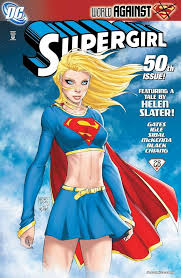Unpacking the Legacy of Supergirl in Modern Culture

Introduction
Supergirl, known as Kara Zor-El, has emerged as a significant figure in the world of comic books and pop culture since her introduction in 1959. As the cousin of Superman, she represents a powerful symbol of female empowerment and resilience. With the rise of superhero films and television shows, Supergirl has become increasingly relevant, not only as a character but also as an icon embodying the evolving narratives surrounding women in media.
Current Developments in the Supergirl Franchise
In recent months, speculation has grown around the future of the Supergirl character in media. Following the conclusion of the popular television series “Supergirl” on The CW, which aired its final episode in November 2021, interest in the character has surged. Fans are excited about the upcoming DC superhero movie “The Flash” set for summer 2023, which will feature Sasha Calle as the new Supergirl. This casting represents a pivotal moment for diverse representation in superhero lore, as Calle, a Latina actress, brings a fresh perspective to the beloved character.
The Impact of Supergirl on Society
Supergirl’s legacy goes beyond entertainment; she has sparked discussions about gender roles and the portrayal of women in comic books. Various adaptations have explored themes of strength, identity, and responsibility, resonating with audiences around the globe. The character’s journey from a secondary superhero to a lead in her own right illustrates the shifting attitudes toward female superheroes in popular culture. The series has inspired a new generation of girls to embrace their strengths and fight for justice, reinforcing the notion that superhero narratives can indeed empower young women.
Fan Engagement and Cultural Significance
The active fan community surrounding Supergirl has also contributed to her significance. Online forums and social media platforms buzz with discussions, fan art, and theories revolving around her character and story arcs. This interaction demonstrates how modern audiences engage with and shape the narrative worlds they love. Comic conventions, where fans dress as Supergirl and celebrate her story, further cement her place in the cultural landscape.
Conclusion
Supergirl continues to capture the imaginations of audiences around the world and serves as a testament to the transformative power of superheroes in culture. As she transitions into new adaptations, the expectations for the character remain high, underscoring her importance as a beacon of hope and strength. Looking ahead, it is clear that Supergirl is not just a comic book character; she is a cultural symbol whose influence is destined to grow as narratives evolve. Her journey reflects broader societal changes and the ongoing conversation about diversity and representation in media.









